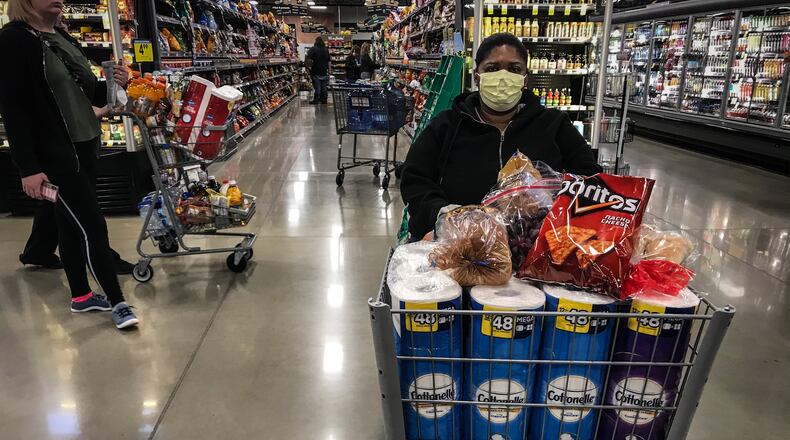Whether you look at supply chain bottlenecks, surging energy demand, product scarcity, labor shortages and other areas of rising costs, there seems to be a single reason, some believe.
“It’s all tied back to COVID,” said Ben Ayers, a senior economist for Columbus-based Nationwide Insurance. “The further we get away from this, the more normal this is going to look.”
Prices for food consumed in the home increased 4.5% in September compared with the same month last year.
Procter & Gamble Co said this week it will raise prices of some of its grooming, oral and skin care products in the U.S. to counter higher commodity and freight costs that are expected in coming months.
A leap in consumer prices in September sent inflation up 5.4%, the government reported last week, matching the measure’s largest increase since 2008.
And expected in the coming months — higher heating costs, as far higher natural gas prices are fully felt this winter.
It’s more than a “triple whammy,” Ayers said.
He expects prices to moderate, but he also cautioned that not all of the elevated prices will be transitory. Ayers thinks over the next three to five years, many prices will be slightly higher than what they were pre-COVID. If inflation averaged around 2% before the pandemic, it may reach 2.5% for the forseeable future, he cautioned.
New Federal Reserve data seems to back him up. This week, the gauge known as the 10-year break-even rate pointed to the consumer-price index rising by an annual average of 2.57% over the next decade.
“That’s not a huge shift up,” Ayers said. “That’s a modest increase relative to the previous trend.”
Mingming Pan, associate professor of economics at Wright State University, also sees the pandemic as the chief inflationary culprit.
“If the pandemic continues on, these problems cannot be solved,” Pan said. If the pandemic can be addressed, then so can these other problems, at least “gradually,” she added — production, supply chain, labor supply and more.
But Jeffrey Haymond, professor of economics at Cedarville University, sees something else at work.
Haymond agrees that inflation has several causes, but he disagrees that dealing with the pandemic will address all of them in one fell swoop.
“Inflation is always and everywhere a monetary phenomenon,” Haymond said, citing Nobel Prize-winning economist Milton Friedman.
The dean of the Cedarville School of Business said the Federal Reserve has been “more than accommodative,” buying bonds at a breakneck pace.
“That is the overarching enabler,” Haymond said.
Federal Reserve moves have made the stock market “much higher than it should be,” he said. And those elevated stock values have inspired some people to retire now, contributing to the phenomenon of the 4.5 million “missing workers.” More than 18 months after COVID-19 was first felt domestically, the U.S. has some 4.3 to 4.5 million fewer workers.
Some of that can also be traced back to expanded federal benefits in the past year and a half, Haymond said.
He acknowledges that the supply side issues are real. “I’m not trying to minimize those.”
But he adds: “The Fed should just stop. They don’t need to add liquidity to the system.”
The Federal Reserve is widely expected to taper its bond-buying program, cutting back on its $120 billion a month in bond buys — and even consider raising interest rates in 2022.
When interest rates go up, so do borrowing costs, slowing the economy and cooling inflation, typically. But there are exceptions, such as the late 1970s and early 1980s, when both inflation and interest rates were uncomfortably high.
“When you let the inflation genie out of the bottle, it is very difficult and very costly to contain,” Haymond added.
About the Author

